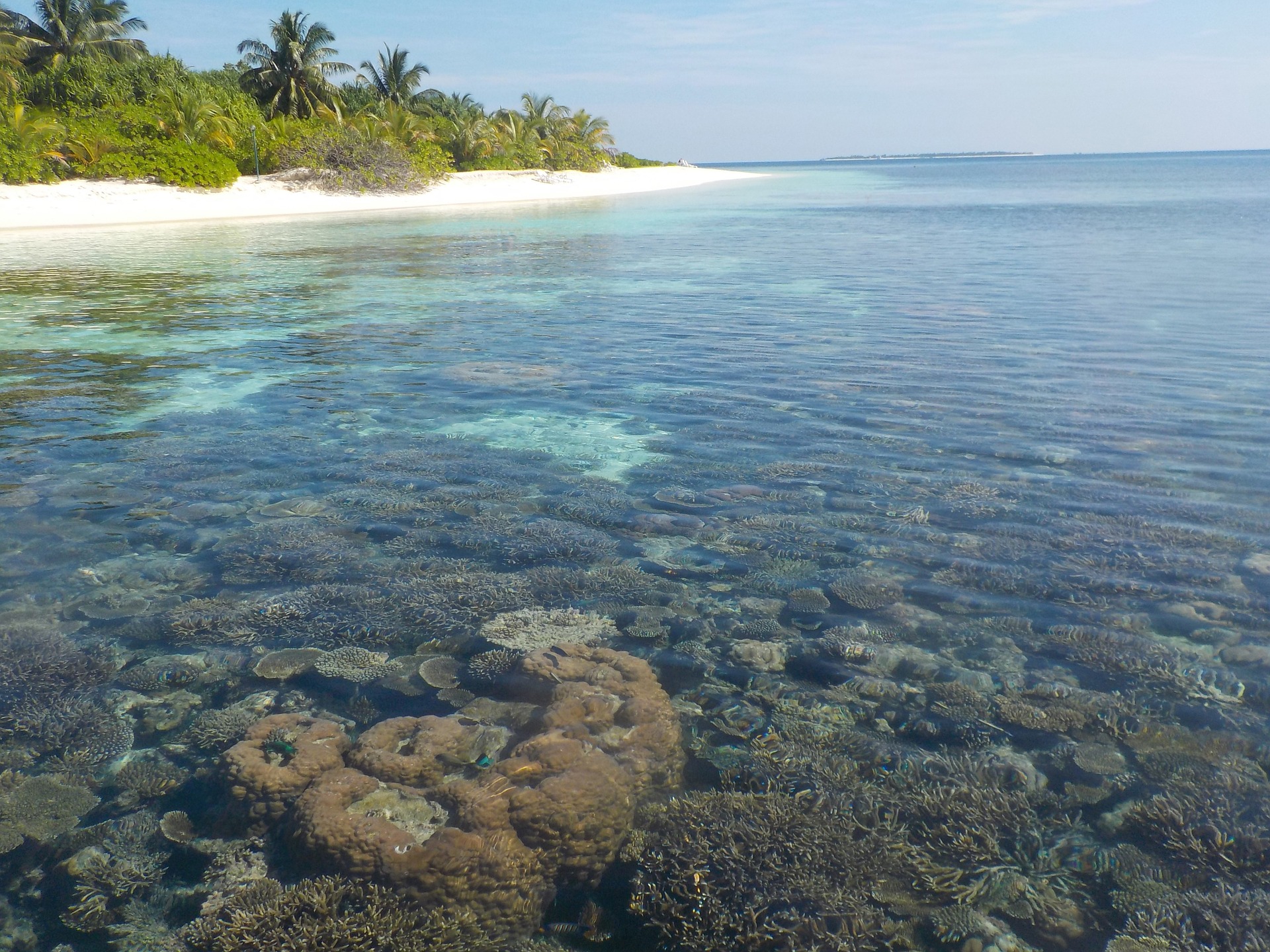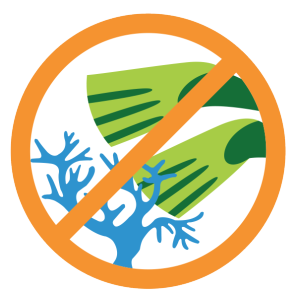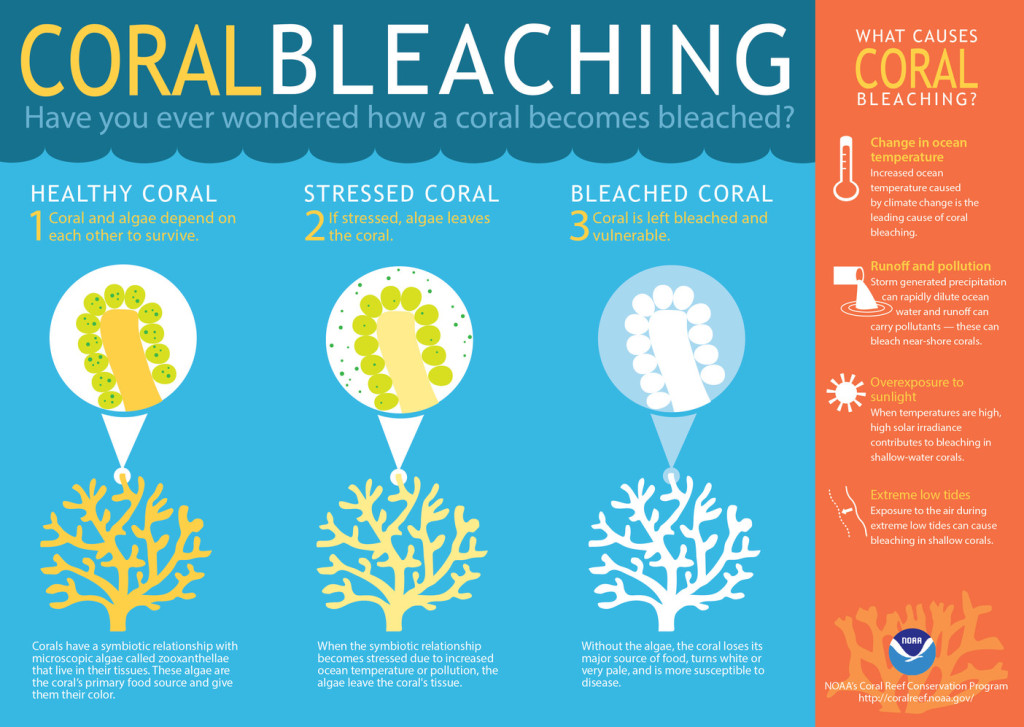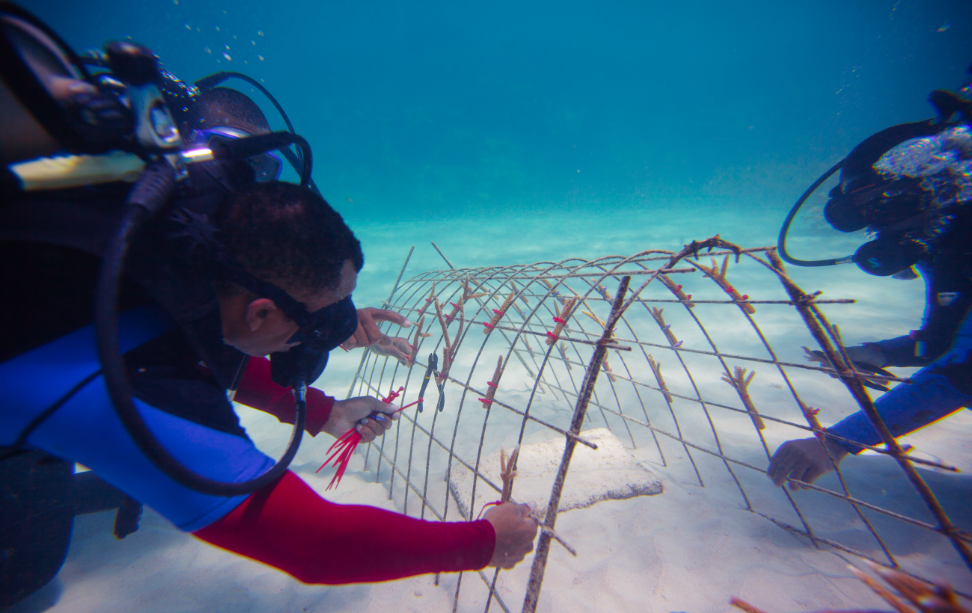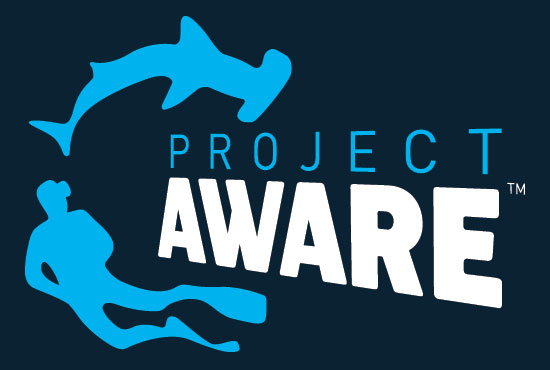“Don’t Touch The Coral” If you have ever been diving or snorkeling by a beautiful coral reef, you would have heard the strict instructions not to touch, or break the delicate coral which takes years to grow. We are increasingly aware of the threats to our underwater ecosystems caused by bleached and damaged coral, but did you know about the increasingly popular movement of “Coral Gardening” which is helping to restore healthy coral reefs?
Causes of Coral Destruction
Coral has been measured to be declining at an increasing rate with roughly one quarter of reefs worldwide already damaged beyond repair. Cyclones, pollution, warmer waters, and ocean acidity, as well as competition from seaweeds and predators are some of the main culprits. Of course Scuba divers and snorkelers also can take some of the blame if they accidentally break coral, or contribute to pollution through use of destructive sunscreens. Destructive fishing methods such as dynamite fishing, or bottom trawling play a big part of the destruction in some areas. Coral mining is also an issue in some countries, where the living coral is harvested for use in bricks, building, road construction, and to be sold to tourists.
Coral Gardening – Aquaculture of Coral
Coral Reef Farming is the concept of extracting segments of larva of live corals from a reef and then proceeding to grow them in a nursery until adulthood. The technique involves treating coral as if it were a plant, leading to the name ‘Coral Gardening’. Coral Gardening has been enjoyed by many who have a coral display in an aquarium, and there are businesses who grow it for this purpose. Now Coral Gardening is taking off as a popular conservation effort to restore and create beautiful coral gardens which help to provide the important part of the ecosystem for many underwater species.
How are Coral Gardens made?
Coral can either be reproduced sexually, or asexually by budding polyps. In the first method, spawn is collected, collonised in tanks then into floating nurseries in the ocean. The next step is to transplant it into the sea and secure it, then wait for it to grow! The Coral can be secured with cable ties, rope frames, and other inventive measures to hold the coral in place.
The more current method is to source coral seedlings from reef colonies or stray coral fragments, by harvesting coral branches, fragments, or nubbins (pieces of coral pruned from the tips). This fragmentation is the most practiced method.
Become a Coral Gardener!
Although you may not go out and set up your own home coral gardening facility, there are places all around the globe where you can become involved in the process. Volunteer projects are available in places such as Fiji, Indonesia, Malaysia, Australia, etc… You can learn more about coral conservation and restoration by getting stuck in, and join an educational dive, such as a Project AWARE Reef Conservation Course where you can incorporate learning to recognize a reef in distress to you dives. Be sure to research the facility you plan to volunteer at to ensure you are working towards the greater good, in a sustainable manner. Remember it isn’t always necessarily hands-on; doing things like educating locals on how to preserve the reef can go a long way! Find out more about actions you can take within your own community too!
In the meantime, here are some good dive practices to help you help the reefs! Consider taking our Peak Performance Buoyancy specialty to perfect your positioning in the water to avoid damaging vulnerable marine life! Fish ID is another awesome specialty that will help familiarize you with the underwater world; conservation starts with education.
If you would like to learn more ways to help the underwater environment, get in touch with us at Dive HQ Christchurch – 103 Durham Street South – 03 379 5804 – and we will introduce you to Project AWARE!
